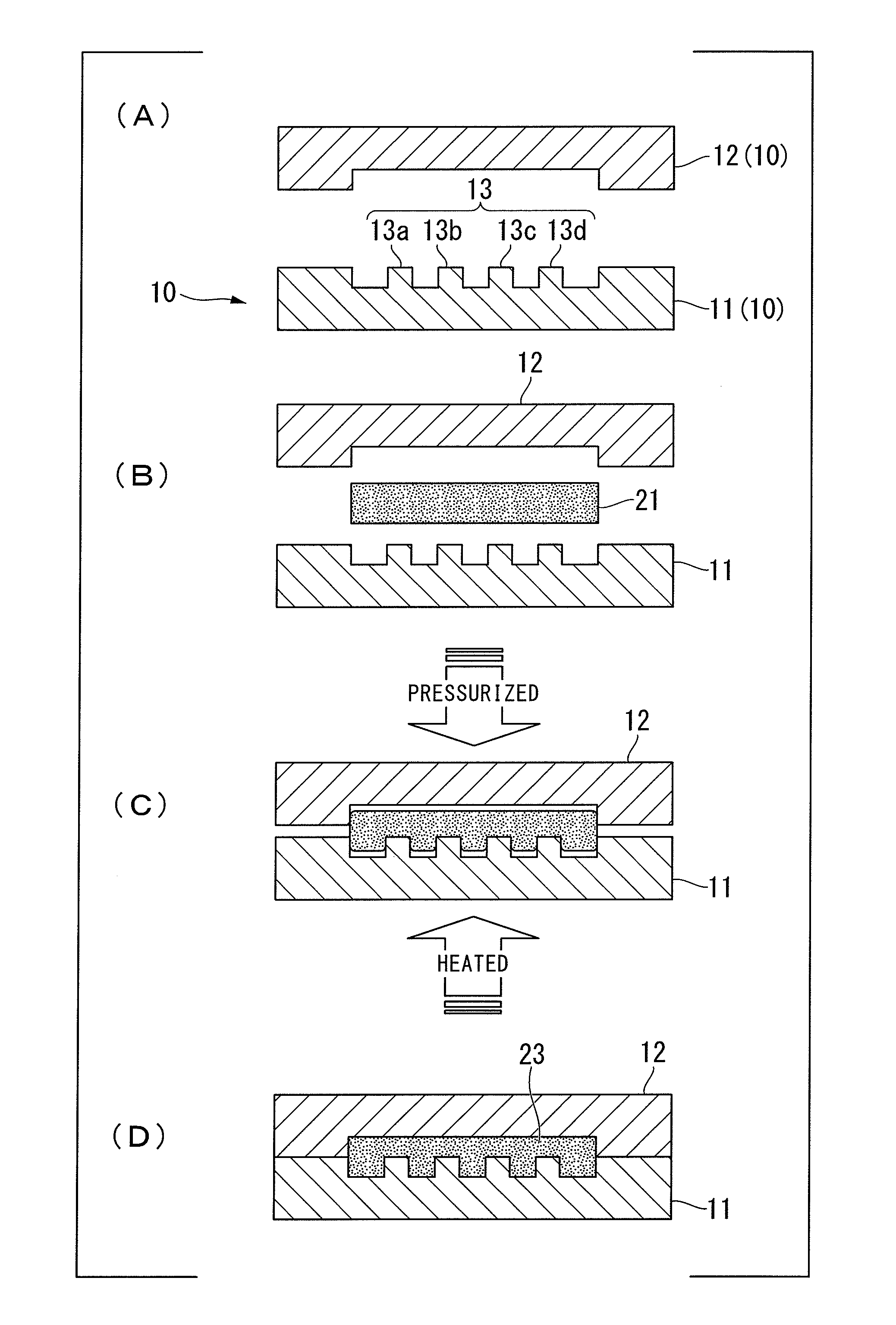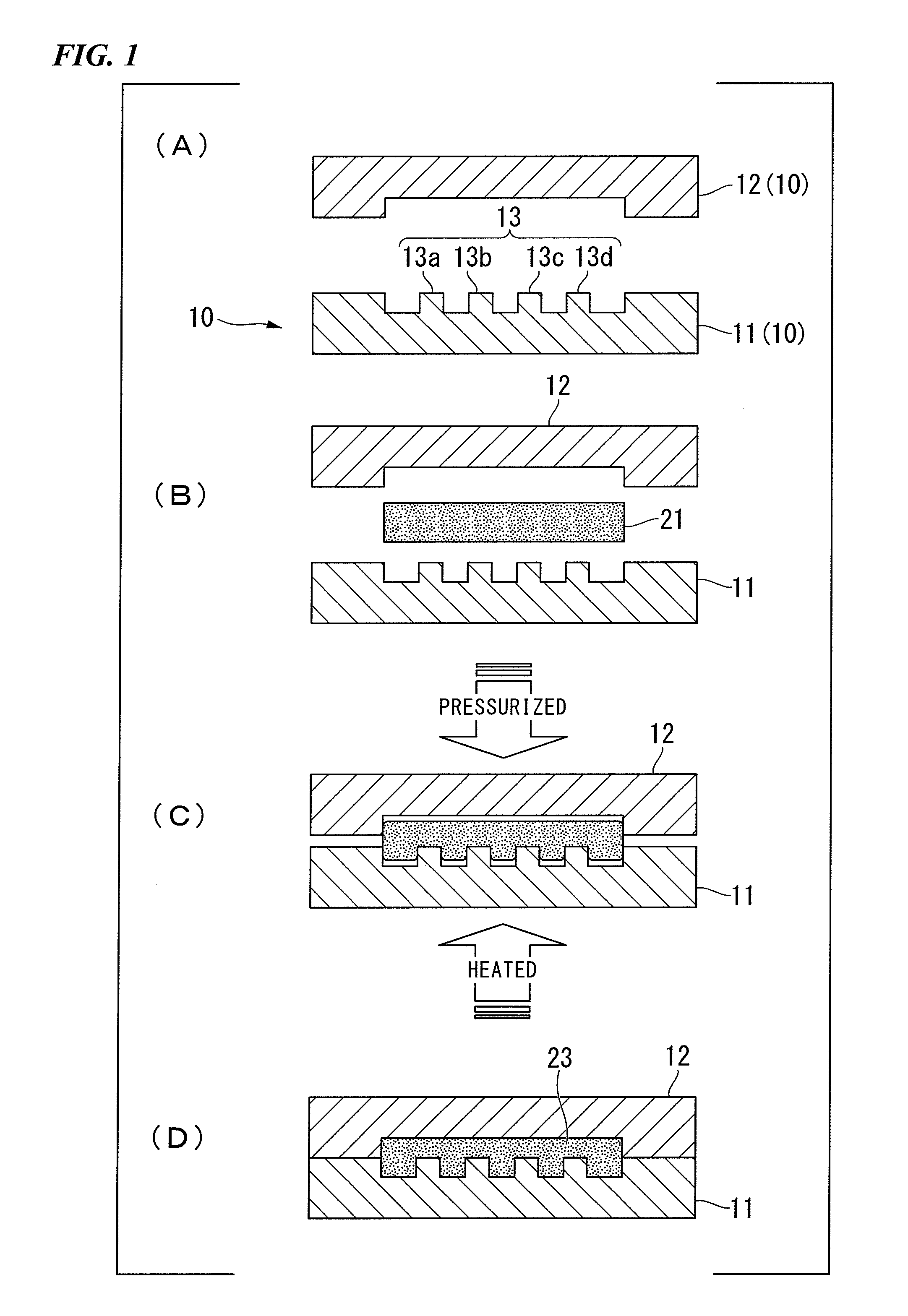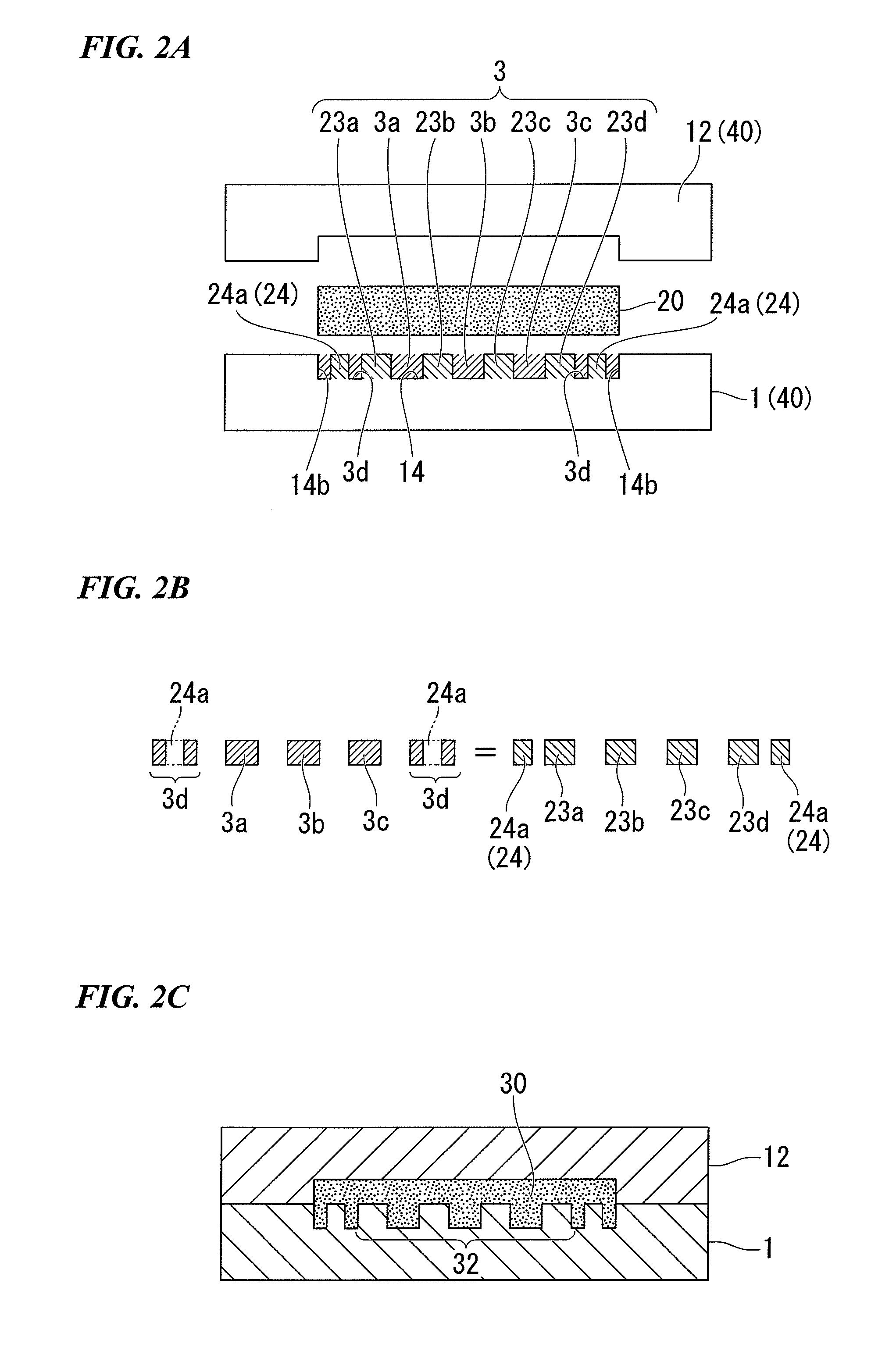Sheet press molding method and method of manufacturing fuel cell separator
a fuel cell separator and molding method technology, applied in the direction of sustainable manufacturing/processing, final product manufacturing, electrochemical generators, etc., can solve the problems of large specific gravity of metal materials, insufficient corrosion resistance, brittle fracture, etc., to achieve high electrical conductivity, high strength, and thin thickness
- Summary
- Abstract
- Description
- Claims
- Application Information
AI Technical Summary
Benefits of technology
Problems solved by technology
Method used
Image
Examples
examples
[0136]Hereinafter, the invention will be described specifically showing examples.
example
[0137]The fuel cell separator of the embodiment was manufactured as a molded product using a sheet-shaped material including a carbonaceous material as the filler and the sheet press molding method of the invention.
[0138]That is, a fuel cell separator 35 shown in FIG. 3 having a flow channel pattern 31 to which a recess and protrusion pattern is transferred and a plurality of recessed portions 24b, 24c, 24d, and 24e to which a dummy pattern is transferred on one surface is obtained by pressurizing the sheet-shaped material shown below using the pair of molds shown below having the recess and protrusion pattern. FIGS. 3A to 3D are views showing the fuel cell separators of Example and Comparative Example. FIG. 3A is a planar view of the fuel cell separator of Example, FIG. 3B is a cross-sectional view of the cross-section A-A′ in FIG. 3A. In addition, FIG. 3C is a planar view of the fuel cell separator of Comparative Example, and FIG. 3D is a cross-sectional view of the cross-section ...
PUM
| Property | Measurement | Unit |
|---|---|---|
| mass ratio | aaaaa | aaaaa |
| thickness | aaaaa | aaaaa |
| diameter | aaaaa | aaaaa |
Abstract
Description
Claims
Application Information
 Login to View More
Login to View More - R&D
- Intellectual Property
- Life Sciences
- Materials
- Tech Scout
- Unparalleled Data Quality
- Higher Quality Content
- 60% Fewer Hallucinations
Browse by: Latest US Patents, China's latest patents, Technical Efficacy Thesaurus, Application Domain, Technology Topic, Popular Technical Reports.
© 2025 PatSnap. All rights reserved.Legal|Privacy policy|Modern Slavery Act Transparency Statement|Sitemap|About US| Contact US: help@patsnap.com



